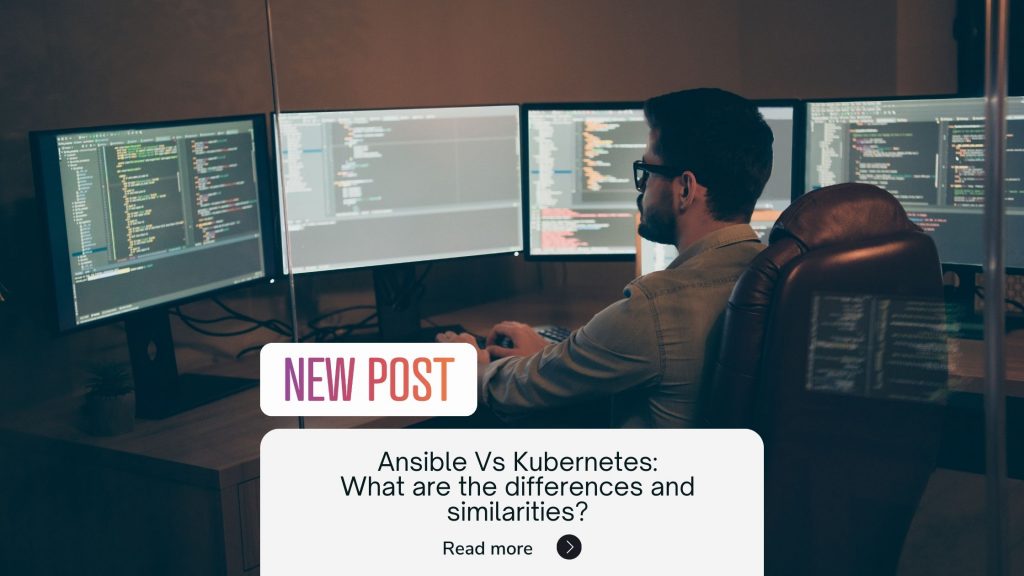Looking for a comprehensive guide to help you choose between Ansible and Kubernetes? We’ve got you covered. In this blog, we’ll explore the key differences between these two popular DevOps tools, so you can make an informed decision about which one is right for your needs. Read on to learn more.
Introduction
DevOps has been a topic that’s been getting more and more attention over the last few years. While DevOps is a huge subject, there are many tools that are used for a DevOps approach to software development. Here we are going to look at Ansible and Kubernetes. We will explore what they are, how they work, what they can do and where they can be used.
A lot of this technology is still new, so if you are struggling to decide which process is right for you then this blog is the place to be.
Table of Content
- What Is Ansible?
- What Is Kubernetes?
- Drawbacks of Ansible & Kubernetes
- How Are These Two Tools Alike?
- Major Differences between Ansible & Kubernetes?
- Popularity of Ansible & Kubernetes
- Learn More About Ansible and Kubernetes?
What Is Ansible?
Ansible is a software that helps automate various IT tasks, such as cloud provisioning, configuration management, application deployment, intra-service orchestration, and more.
Ansible is an open-source software solution that breaks away from the conventional client-server model. Ansible’s unique design allows it to automate the entire application lifecycle, as well as the continuous delivery pipeline. Difficult and time-consuming processes can be changed into repeatable playbooks, which drastically increases production speed while bringing a much-needed element of simplicity.
Ansible requires a Linux/Unix host (e.g., Debian, Red Hat Enterprise Linux, CentOS, macOS, BSD) as its control machine. Also, Ansible uses the Python programming language, versions 2.7 or 3.5.
Ansible has been known to run on several cloud platforms, including:
- Amazon Web Services (AWS)
- Atomic
- CenturyLink
- Cloudscale
- CloudStack
- DigitalOcean
- Dimension Data
- Docker
- Google Cloud Platform
- KVM
- Linode
- LXC
- LXD
- Microsoft Azure
- OpenStack
- OVH
- oVirt
- Packet
- Profitbricks
- PubNub
- Rackspace
- Scaleway
- SmartOS
- SoftLayer
- Univention
- VMware
- Webfaction
- XenServer.
Features of Ansible:
- Simplicity: Ansible playbooks don’t require any specific coding skills, so anyone can use them. They’re also easy to set up. Simply run the provided shell script, and you’re all set!
- Power: Ansible handles highly complex IT workflows.
- Zero Cost: Ansible is a free, open-source software solution.
- Flexibility: Ansible provides you with the power to completely customize your application’s deployment process according to your unique specifications. With its hundreds of available modules, Ansible is the perfect tool for anyone looking for complete control over their software environment.
- Ease of Use: Most of the playbooks are written in YAML, making them easy to edit and read.
- Agentless Installation : You can set Ansible up in minutes using OpenSSH. You also don’t need to set up agents on remote servers.
- Efficiency: Ansible is a great choice for those who want to avoid installing extra software, as it doesn’t require any additional resources. This means you can dedicate more of your time and energy to your other applications, which is always a plus!
What Is Kubernetes?
Kubernetes is a container as a service (CaaS) project that was released by Google. The website for the project describes Kubernetes as “a portable, extensible, open-source platform for managing containerized workloads and services that facilitates both declarative configuration and automation.” This automation can help to improve the development processes for applications that use Kubernetes.
“Kubernetes” is a Greek word meaning a pilot or helmsman. According to Greek mythology, a kubernetes was responsible for steering drakon ships.
Kubernetes uses the Go programming language. Like Ansible, it runs on many different cloud platforms, including:
- AWS
- Azure
- CloudStack
- GCE
- OpenStack
- OVirt
- Photon
- VSphere
- IBM Cloud Kubernetes Service
- Baidu Cloud Container Engine.
Features of Kubernetes:
- Container Balancing: The Kubernetes platform calculates the best location for a given container without requiring any user interaction.
- Flexibility: Because Kubernetes is an open-source cloud-based tool, it’s portable and offers multiple environment flexibility, meaning it can run on public cloud systems, on-premises servers, or hybrid clouds.
- Zero Cost: Kubernetes is a free, open-source platform.
- Process Automation: Kubernetes can automatically decide which server will host any given container.
- Self-Monitoring: Kubernetes stays vigilant, maintaining constant checking of the servers’ and containers’ health.
- Scalability: It provides horizontal scaling, allowing companies and organizations to quickly scale-out storage, fitting their workload needs.
- Storage Orchestration: Kubernetes integrates with most storage systems; for example, you can combine it with an AWS Elastic File System.
Drawbacks of Ansible & Kubernetes
Ansible and Kubernetes are great tools, but they’re not perfect. Each one has its own set of challenges that you’ll need to overcome. But don’t worry, with a little bit of effort you’ll be able to overcome them and reap the rewards of using these amazing tools.
Drawbacks of Ansible:
- User Interface: Ansible’s user interface is less than ideal – in fact, it only executes 85 percent of the commands that are typically run on the command line. Even though 85 percent may sound like a good figure, a decent UI should provide you with 100 percent of the commands you need.
- No States: Ansible has no notion of the state; it just runs tasks sequentially until it’s done or encounters an error.
- Lack of Windows Support: Ansible’s Windows support still has a lot of catching up to do. You still need a Linux control machine to manage Windows hosts.
Finally, since it’s still a relative newcomer to the DevOps scene, Ansible has less experience in delivering support to enterprise-level users and the smallest user/developer community. That latter deficiency makes it tougher for users to perform troubleshooting tasks.
Drawbacks of Kubernetes:
- Steep Learning Curve: Even the most experienced DevOps professionals encounter difficulty trying to figure out the platform’s ins and outs. Kubernetes users should be familiar with the entire cloud-native ecosystem as a whole
- Installation Issues: Kubernetes is challenging to install and configure manually since you will need to configure security and multi-host networking; attach storage; and enable monitoring, auditing, and logging.
- Lack of High Availability: Kubernetes doesn’t have a default high availability (HA) mode, so you have to configure your HA to create a fault-tolerant cluster manually.
The final disadvantage of using Kubernetes for your business is the added cost of hiring Kubernetes experts to help manage the system. While this is great for professionals looking for work in the DevOps field, it can be a strain on companies that are trying to stay within a budget.
If you’re concerned about the cost of adding more personnel, there are always options available to help you round out your team and handle these challenges. Whatever route you choose, remember that spending additional money on Kubernetes talent is a good investment for your business.
How Are These Two Tools Alike?
Kubernetes and Ansible may not have much in common at first glance, but they actually share a lot of similarities. Both are cost-effective since they’re open-source software, and they’re both easy to use while still being powerful.
However, there’s little chance of confusing one for the other!
Major Differences between Ansible & Kubernetes?
The differences between these two products are listed below:
Ansible:
- Ansible is an IT automation tool that deploys software, configures systems, and organizes more complex IT functions such as rolling updates or continuous deployments.
- Ansible deploys changes to hosts
- Ansible is an excellent useful tool for front-end developers, particularly in situations where some programming is required.
Kubernetes:
- Kubernetes is a system designed to orchestrate Docker containers. It manages workloads and uses nodes to handle scheduling to make sure that their condition matches the users’ expectations.
- Kubernetes manages containers and keeps them working properly.
- Kubernetes is best suited to developing larger apps.
It’s difficult to compare these two tools because they serve such different purposes. Both tools are used for DevOps and configuration management, but they have very little overlap in terms of usage.
Popularity of Ansible & Kubernetes
Each solution is used by different organizations & companies based on their needs.
AppDirect, Bose, Comcast, eBay, Google, IBM, Nav, Nokia, Philips, Slack, Spotify, Unicom, and many more use Kubernetes while Capital One, Cisco, HootSuite, NASA, NEC, Twitter, and Verizon, among others use Ansible.
While it’s difficult to compare the popularity of Ansible in a side-by-side manner, it’s worth noting that Ansible is the most popular configuration tool, with a 41 percent rating, according to Flexera’s RightScale 2019 State of the Cloud Report. This is compared to similar tools like Chef and Puppet.
Kubernetes has become the leading container management system, beating out competitors such as Docker Swarm and Apache Mesos, according to an article from Opensource. The main reason for Kubernetes’ popularity is its large and active community of users, according to an article from Container Journal.
Learn More About Ansible and Kubernetes
Comparing Ansible and Kubernetes can be difficult without understanding more complex concepts. Fortunately, TopD Learning offers additional resources to help you learn about these DevOps tools. By understanding the basics of each tool, you can better choose which one is right for your needs.
If you’re interested in learning more about Ansible, signup for the “Ansible Foundation Training Course” by TopD Learning.
On the other hand, if you would like to get some Kubernetes training, then consider signing up for “Certified Kubernetes Administrator (CKA) Certification Training Course” by TopD Learning.
Conclusion
If you work in DevOps or want to work in it, then it’s essential to be knowledgeable in as many tools as possible.
That’s why TopD Learning offers the DevOps Certification Training Courses that covers the top tools. Whether you’re taking those first few steps to become a DevOps professional or you’re only interested in upskilling, we have the courses that you need.
Contact us for more information about how we can help you become a DevOps expert today!


